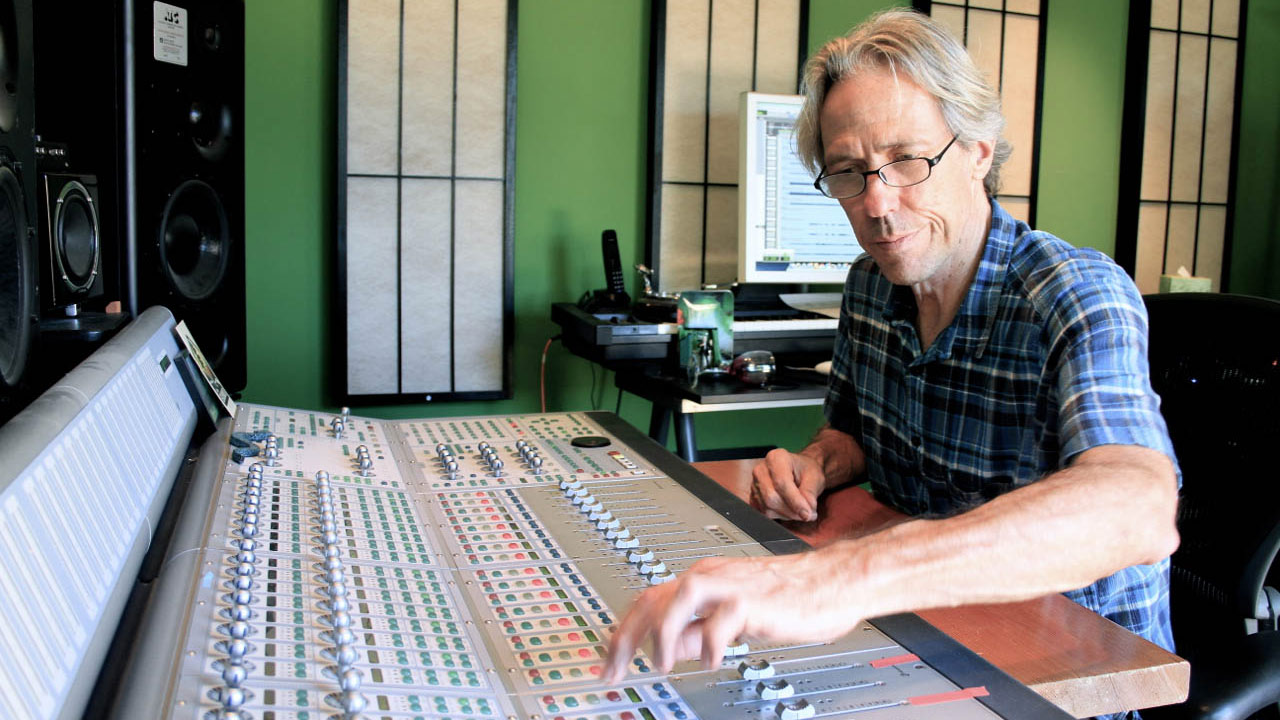Ryan Ulyate has been recording, mixing and producing music professionally since 1978. In 2005, he began a decade-long collaboration with Tom Petty that included mix and production credits on the Mojo (2010) and Hypnotic Eye (2014) studio albums.
He’s also a big proponent of immersive audio, having created 5.1 mixes of the aforementioned two albums as well as Damn The Torpedoes (1979) for the now out-of-print High Fidelity Pure Audio Blu-Ray editions. In 2020, he upgraded his Topanga-based studio for Dolby Atmos monitoring and has since mixed Petty’s Wildflowers (1994), Angel Dream (1996), and Greatest Hits (1993) in the format. I had the chance to chat with Ryan about his career, experience with Atmos mixing, and where he thinks the industry is headed.
How did you first get into engineering and producing music? What do you enjoy about it most?
My dad was a professional musician in Los Angeles, and he was in this group called the Hollywood Saxophone Quartet. They played these really difficult classic pieces on four saxophones: baritone, tenor, alto and soprano.
They rehearsed at our house with a mono 7.5 IPS tape deck. It had these big piano keys and a microphone. I discovered that tape recorder when I was around five or six years old, and it was like my “monkey sees obelisk” from 2001: A Space Odyssey. [laughs]
I've just been infatuated with tape recorders and music my entire life. That led me to becoming an engineer, songwriter, producer, musician and all that stuff. It's all kind of hand-in-hand. There’s something just something amazing about recorded music, the idea of making an artistic statement that lives on.
I understand you began working with Tom Petty in the mid-2000s. How did that collaboration begin?
I was really lucky. I was working with Jeff Lynne at the time, and Tom came in to start doing what ultimately became the Highway Companion album in around 2004.
I'd actually met him a few years earlier, when he played at the Concert For George in 2002. He liked the mixes we’d done for The Heartbreakers’ portion of the concert, and then we started working together in earnest with Tom coming around to Jeff's house. It was just so fun to work on his music.
Today, you oversee all archival reissues on behalf of the Petty Estate.
Yeah, it's a real honor to be involved. I got to know Tom and his family really well over the years. After he passed away, I had a pretty good sense of what was in the library–though I don't want to put anything out that my friend wouldn't have liked.
I’ve been really fortunate to have both the family and Tom’s bandmates trust me with this. I'm always constantly thinking about that, and about doing things that I know the fans would like because I'm a fan too. It's a responsibility that I take very seriously.

Tom’s Mojo (2010) was one of the first albums to be issued in the Blu-Ray Audio format, with a 5.1 mix. Blu-Ray editions of Hypnotic Eye (2014) and Damn The Torpedoes (1979) later followed. How did these projects come to pass? The major labels had mostly abandoned support for 5.1 music by the early-2010s.
The first thing I mixed in 5.1 was the Concert For George, because it’s a movie. After that, we started working on a project for Tom Petty & The Heartbreakers called The Live Anthology. This involved me going through the tape vault and finding every live performance they ever recorded.
We’d just put out the Running Down A Dream documentary that Peter Bogdanovitch directed, which had a lot of great archival footage and performances from the past. We actually beat The Who for the best video Grammy. After it came out, Warner Brothers wanted us to put out a live album. So we put together the ultimate live album, spanning thirty years of the band. That was the first time we’d done something audio-only in 5.1.
I did it at a post-production place in LA called P.O.P. Sound. We started working on Mojo a few years later. They gave us a budget for that, which I used to upgrade my studio for 5.1. Mojo was 90% live-in-the-studio, which made for a really fun experience.
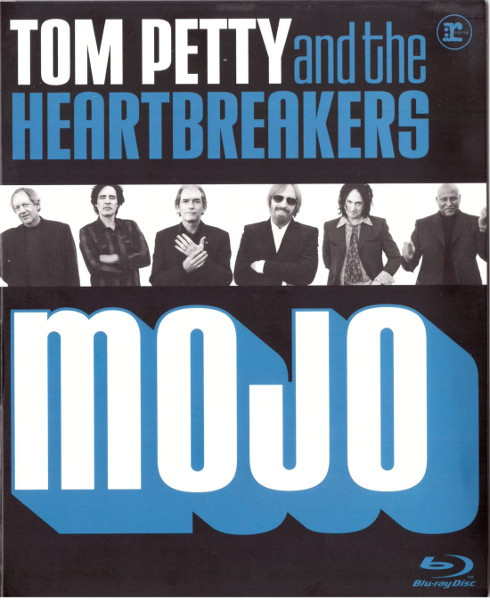
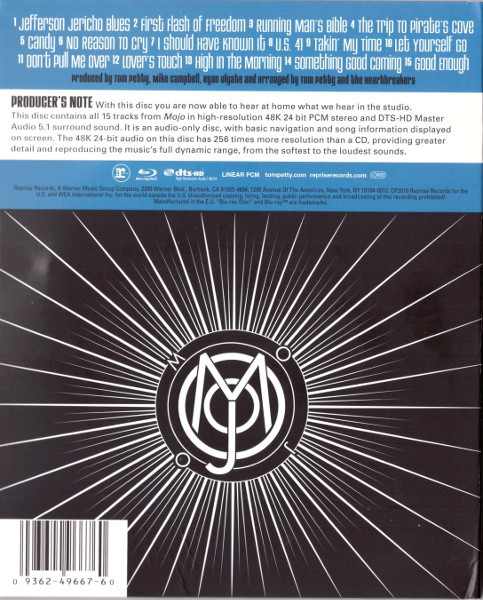
With regards to Dolby Atmos, you seem to be one of the few mixers willing to take advantage of the entire 7.1.4 palette.
There's 11 speakers. Why wouldn’t you want me to use them all? [laughs]
I can say for certain that many of my peers are similarly invested in the format and really trying to push the envelope with it.
The other aspect of this is the demand for more product, and a lot of that is being done on-the-fly from stereo stems. I think that's to the overall detriment of the format, because if it's not that impressive-sounding you’ll see more people like Nigel Godrich complaining about it. He has a point, but can you imagine Radiohead in Atmos? I’d love to take a shot at that.
Right now. I think what's happening is that the playback systems are lagging behind the masters. If you’re listening only to headphones, you might not hear the difference between an Atmos mix thrown quickly from stems versus one that’s really been slaved over. Headphones are great because they allow new listeners to dip their toe into this format. Some of the soundbars, like Sonos Arc, give a better sense of what we’re doing in the studio.
We’ve got to make sure our masters are as good as possible. If it sounds kind of impressive on headphones, it should really knock you out over speakers.
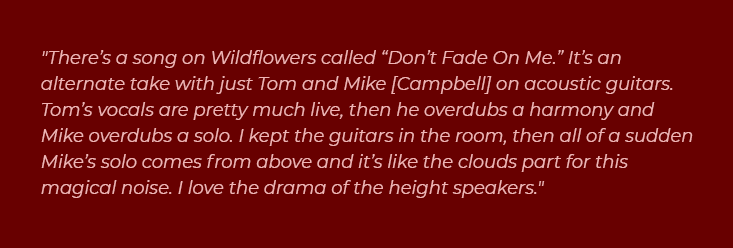
I noticed that you tend to change how the instruments are positioned from song-to-song, anything from harmony vocals to percussion or even a guitar solo may appear in the height speakers. There’s even a song on the Angel Dream album with a loud timpani drum in the tops!
Yes! That was “Grew Up Fast.” As you pointed out, I really like to use the tops. It's like you've got this whole extra plane to create drama. That’s the way I look at it. The “meat and potatoes” of the track is all around you at ear level, but then there are all these other places to put crazy stuff.
On the Tom Petty & The Heartbreakers Greatest Hits album that just came out in Atmos, some of the classic songs from the Jimmy Iovine/Shelly Yakus-era like “Refugee,” “Don’t Do Me Like That,” and “Here Comes My Girl” were recorded with live drums and room mics. On those songs, I wanted to make people feel like they were in the room with the guys.
“Don’t Come Around Here No More” was more of a sound collage, with all kinds of samples and overdubs recorded at different times. On that one, I was less interested in a realistic perspective. The nature of the material definitely dictates how you approach where to place it in the immersive space.
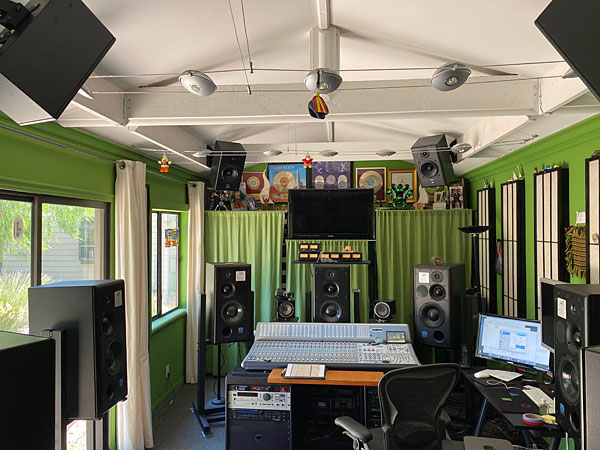
I’ve listened to a lot of Atmos mixes on the streaming services and there definitely seems to be a reluctance to fully engage the height speakers. Sounds tend to appear partially mixed to the tops, but I really like to see specific elements fully isolated up there.
That’s what I do. There’s a full orchestra on a few songs from the Wildflowers record, arranged by John Kamen. It’s audible on the stereo mix, but there isn’t a lot of space for it. When it came time to do the Atmos mix, I often used the tops solely for the orchestra. You get all this power from the stuff that’s around you, and then the orchestra comes in from above. It works really well.
There’s another song on Wildflowers called “Don’t Fade On Me.” It’s an alternate take with just Tom and Mike [Campbell] on acoustic guitars. Tom’s vocals are pretty much live, then he overdubs a harmony and Mike overdubs a solo. I kept the guitars in the room, then all of a sudden Mike’s solo comes from above and it’s like the clouds part for this magical noise. I love the drama of the height speakers.
I tend to put percussion stuff up there as well, because it doesn’t need to be glued in with the drums and guitars. It’s kind of an extra thing, played by a separate person. I can almost imagine Phil Jones standing behind me playing that part.
Were there ever any conversations about including your Atmos mix in the Wildflowers & All The Rest box set?
I did the Atmos mix in the Summer of 2020 and the box was due to come out that following September, so there just wasn’t enough time to throw it in. I always wanted them to do it, but it didn’t happen.
The labels see it as such a niche market now, especially with immersive streaming being available. It's sad because I always want to have the highest-quality audio, but at the same time I can understand their thinking. It's definitely kind of a drag for audiophiles.
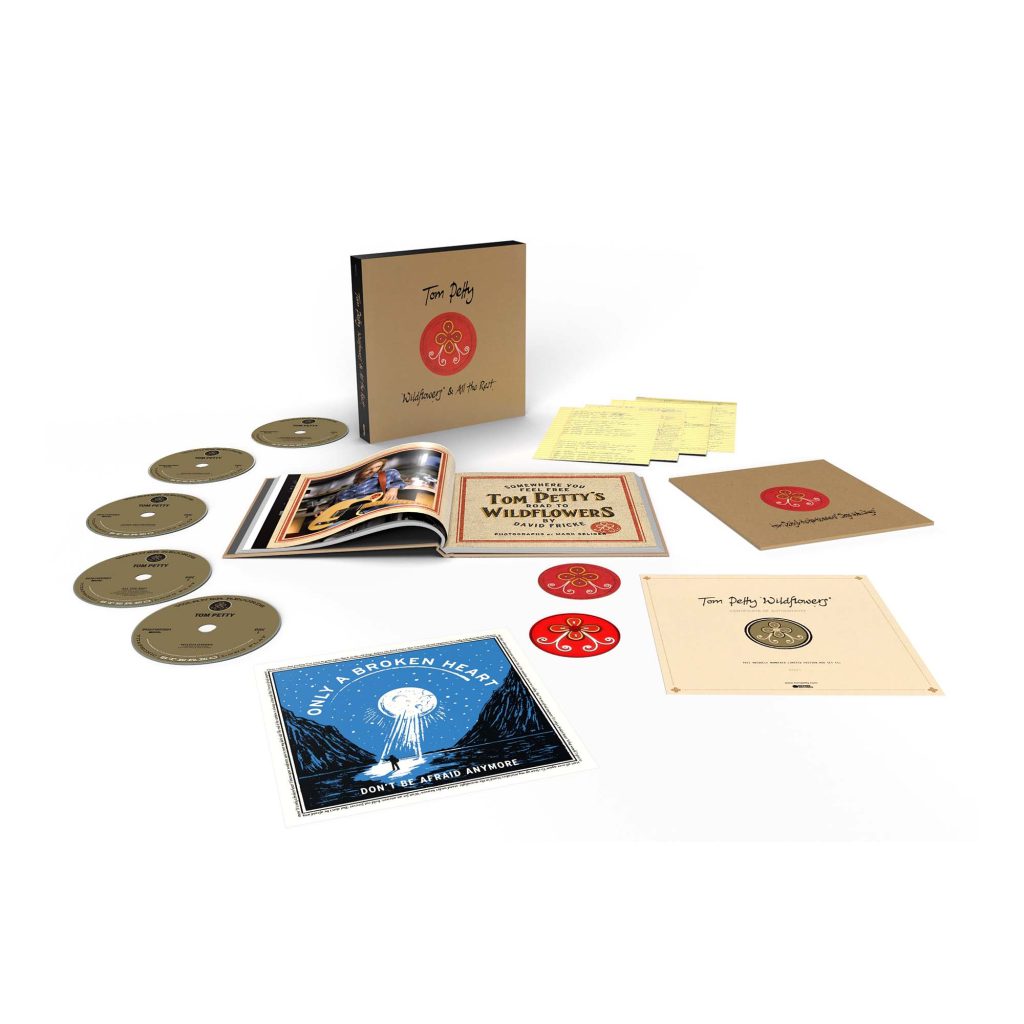
Once you were given digital transfers of the original session recordings, was it difficult to match all the effects and balances of the original stereo versions? Were there any sounds you couldn’t recreate?
So much of this job is really going back and scrutinizing those multi-tracks and constantly A/Bing with the two-track to make sure you’ve got everything. If you blow it and you forget that tambourine on the third verse of whatever, you're a loser. [laughs]
With the earlier albums recorded on 16-track, it’s easier to find the right takes. As things progress into 24-track with multiple slave reels, there’s more detective work involved. It's like audio forensics in a way, to find all the right stuff.
I always start with the stereo master, and we’re fortunate to have really great-sounding 96/24 files from when Chris Bellman remastered the catalog in 2014. Sometimes you have to play the vocal track against the original mix and see where it lines up or where it deviates. Once I have a new stereo mix that sounds as close as possible to the original, I’ll start moving things out into Atmos.
It’s critical to have that matched stereo mix ready first though, to capture all the subtle level changes. It's got to be pretty much the same thing before I'll even consider putting it into 11 speakers.
Are you often surprised by what you find on the session tapes?
There’s so much layering on the Jeff Lynne-produced stuff, like Full Moon Fever and Into The Great Wide Open. That main guitar riff in “Free Fallin’” is made up of maybe four to six guitars. It creates this beautiful texture that sounds like one thing in stereo, but in immersive you can hear the individual pieces come together in your brain.
The hardest song to mix was definitely “Don’t Come Around Here No More.” At that time, you could slave multiple 24-track machines together with timecode. For that song, there was a master and maybe three slaves. They left pretty much all the decisions until the mix, so there’s all these bits and pieces on different tracks. For example, there’s a short fretless bass lick towards the beginning of the song. It turned out that part was tracked for the entire duration, but they only used that one piece. That one was a real head trip.
These are the kind of things that tend to get overlooked every time surround music has been launched, be it quad in the mid-1970s or 5.1 in the early-2000, as there’s always a mad rush to remix back catalog.
I’m fortunate to have the time to really sit down and do it right. There aren’t really any deadlines to knock these mixes out. It’s a luxurious position to be in, and because of that the final product ends up being as good as it can be.

Steven Wilson told me something similar about mixing Tears For Fears’ The Seeds Of Love (1989) in 5.1, with there being multiple slave tape machines and digital instrumentation run live at the stereo mix that he had to re-create from scratch.
Oh yeah, he’s amazing. I remember listening to his 5.1 mix of King Crimson’s debut album some years ago. The guy really knows how to use the format in the right way.
I definitely remember samples being triggered live at the mix during that time. Once the mix was finished, they shut the machine off and the sample went away forever. If that stuff wasn’t printed to tape, it can never be perfectly reproduced.
I think it’s important to realize that these new mixes will never match the originals exactly. I don’t have exactly the same analog board or outboard reverb unit, but I’ll listen closely and think “oh, that sounds like an AMS reverb. Or is it an EMT-140?” I think I have enough intuition to at least get it in the ballpark.
At the end of the day, it’s a different perspective. It does not replace the stereo. It just gives you another place to go with something that you love.
With the introduction of Apple’s “Spatial Audio” format, it seems most listeners are experiencing a binaural approximation of Atmos over headphones rather than the full immersive experience on a home theater setup. Do you ever check how your Atmos mixes sound on headphones, or are they only meant to be heard on speakers?
Tom Petty & The Heartbreakers’ Greatest Hits is probably the first project where I really spent a lot of time listening on headphones. Apple hadn’t launched spatial audio yet when I did Wildflowers, but I remember checking the mix on one of those little Amazon Echo Studio speakers.
When I started working on Greatest Hits, Apple had just made it possible to monitor the spatial stereo in real-time through Logic. So I went out and bought a laptop, then used the Dante Virtual Soundcard to route the 7.1.4 output of the Dolby Renderer into it. Being able to A/B between Dolby’s binaural and Apple Spatial was definitely eye-opening. You’ve got to find that sweet spot where it kind of works in all formats.
If you're just doing it with speakers, you're missing the boat because someone will always be listening with headphones on. As I recall, a lot of the stuff I’d put in the height speakers would get kind of lost in the translation to headphones. You can’t have a harmony vocal completely disappear in stereo, so I ended up pushing those elements a bit harder in the room mix to compensate.

Having experimented with the Dolby Production Suite myself, I noticed you have to keep your overall mix level very low to avoid hitting the limiter on the binaural output too hard.
Yep, they’re definitely holding us to that -18 LUFS benchmark. It’s really important to keep the dynamics though, especially in an album like Greatest Hits with all these songs from different eras. They need to stay at the same relative level, but one can peak at -18 and another might stay at around -22.

One of Nigel Godrich’s biggest complaints about Atmos is that you can’t use bus compression on the entire mix. I guess the way to get around that would be to process the stems ahead of time?
Yeah, if you want. I have no problem with limiting or compression on any individual element and I’ve always done that. Bass guitar doesn’t sound good to me unless it’s really compressed.
Once I have the original EQ and other processing on the stems, I won’t use bus compression on the master because I think it’s kind of a crutch from a bygone era.
The immersive stuff in particular sounds so much better when there’s room for the instruments to breathe. If you try to really hammer the entire mix, it just sounds flat and thin. I want it to sound bigger than life, like these people are really in the room with you and not coming out of a tiny speaker.
They used a lot of compression on the Into The Great Wide Open album, you can really hear it in some of the guitar riffs. The Atmos version of the title track was missing that excitement, so I pushed the volume on the guitar higher rather than adding compression.
I was a big opponent of the loudness wars and I’m glad to see that dynamics can remain intact in this new format. The dynamics are what really creates the drama. It doesn't have to be this flat thing that's going to work against a bunch of road noise.

Do you feel optimistic about the future of this format? Will Atmos succeed where quad and 5.1 failed?
Fingers crossed. [laughs]
I've never seen anything with such wide adoption after only a year. Once Apple embraced it, that really opened the floodgates. It’s easy to hear it on headphones, but I hope people are inspired to upgrade to a soundbar or even a larger speaker system.
The great thing with Atmos is that all these different versions (binaural, 5.1, 7.1, etc) can be generated from one master. The master just has to sound as good as it can on a bunch of different playback systems.
We actually just had a playback party for Tom Petty & The Heartbreakers’ Greatest Hits at Dolby’s screening room in Hollywood. There was a select group of Tom Petty fans there and some press. I was a bit nervous about how something made in my studio would sound in a theatrical setting, but it translated really well. So I think that's one thing that maybe gives me more hope for this format than previous attempts at immersive music.

How do you usually set up your Atmos mixing sessions? Do you rely more on objects versus beds? Do you typically use a 5.1 or 7.1 configuration for beds?
It’s very simple, usually a 7.1 bed and four static objects for the heights. If I want there to be some kind of movement or an active pan, I’ll make another object for that. I don’t want to do anything that’s too distracting though. With Tom Petty’s music, it’s really about giving each instrument its own space and immersing the listener.
I’ve actually come to prefer using a 5.1 bed and then a stereo object for the side speakers, because the content panned to the sides will render more accurately in a phantom center between front and rear in formats like 5.1 or 5.1.4. With a 7.1 bed, all that information in the side speakers will go to the rears.
That's really interesting, I'm going to write that down!
So if I really wanted something to come solely from the side speakers, I’d be better off using objects because the 5.1 fold-down would more-closely resemble the 7.1.4?
Yes, though all three Tom Petty Atmos mixes seem to translate to 5.1 nicely. I noticed you’ll usually have distinct sounds like keyboard or even double-tracked vocals in those side speakers, which work just as well coming from the rear. I’ve heard other Atmos mixes with the lead vocal mostly panned to the side speakers and that can result in an odd-sounding 5.1 presentation.
I think I’ve kind of settled into a template with The Heartbreakers in Atmos. Guitars are usually upfront, with the drums pulled out further into the room. Tom’s vocal is loudest in the center, but also present in the fronts. Then there’s all this space between the sides and rear for Benmont [Tench]. Sometimes I like to have the piano in the sides and organ in the back, which works nicely with the guitars in the front.
For [Mike] Campbell’s solos, I love using the height speakers. It’s like there’s someone sitting up on my ceiling with a deluxe reverb. [laughs]
There’s a really magical moment in “You Don’t Know How It Feels” when the chorus kicks in and Tom’s vocal doubles appear in the side speakers.
Wildflowers is a very stripped-down record, so you can't put more reverb on the Atmos mix to make it sound bigger. You have to honor what these guys were originally going for. There are going to be moments where nothing is happening in the back, then those vocals suddenly appear and surprise you.

I hope you get to remix more of Tom’s back catalog. It’d be great to hear the entirety of Full Moon Fever in Atmos.
I'd love to!
I’m not sure how much influence you have over the marketing aspect of these reissues, but it’d be interesting to see if the record label would consider investing in immersive downloads or maybe even a limited run of Atmos Blu-Rays. There’s a small company based out in the U.K. called “Super Deluxe Edition” that seems to be finding success with this model.
Yeah, that's really cool. I'm always trying to keep up on what consumers are doing and what the formats are. Our job is to do everything we can to make sure that we're giving people the best fidelity. I always tell people that if you don't like Atmos, you should just come over to my house because it sounds really good in my studio. [laughs] You know?
It was the same way when we were doing high-res audio. Why shouldn't anybody be able to play back 96/24 files? Why can't everybody hear the same thing that I'm hearing? The more we can do that with immersive formats, the better.
I can only make suggestions, but sometimes all it takes is a small, very vocal minority to get things moving. If you want to create a movement, you have to get in with the faithful. I joined the Steve Hoffman Forums back when we were doing Mojo and Hypnotic Eye in high-res on Blu-Ray, and there was a huge discussion about dynamic range. People were really fixated on these “DR” numbers from an online database.
I took it to heart and we started getting more conservative with our levels on CDs. I eventually realized that once streaming took off, the CD became a high-fidelity format again. If you buy any of the Petty deluxe reissues with CDs, you'll be really happy with the sound because we let them breathe. You just have to turn them up and they sound great.

